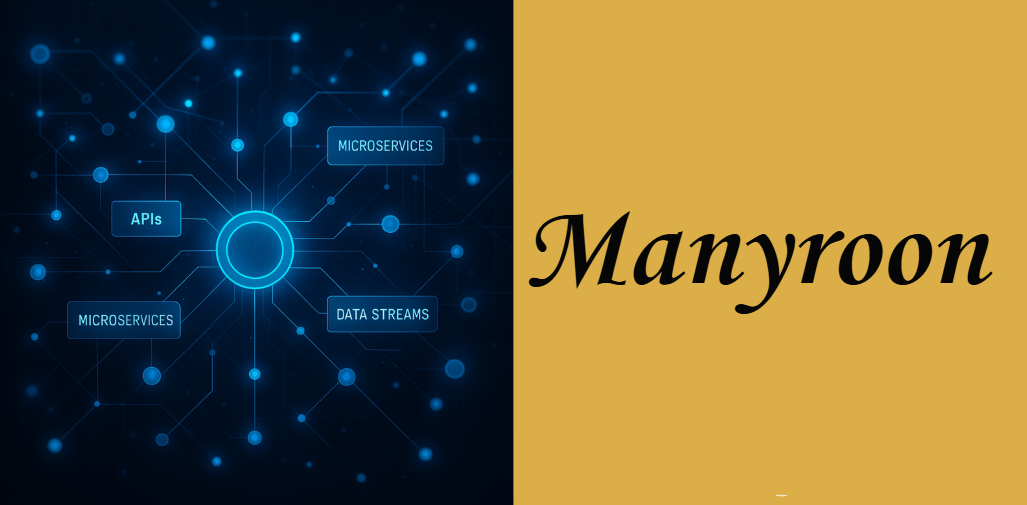Mastering Manyroon: A Practical Roadmap to Seamless Integration
Organizations today juggle a tangle of disparate systems, each designed for a specific purpose—billing, customer support, supply chain, and so on. Manyroon emerges as a flexible framework that unites these silos into a coherent whole. By embracing manyroon, businesses can drive faster decision‑making, reduce operational friction, and foster cross‑team collaboration.
Whether you’re an IT leader seeking scalable architecture or a marketing manager craving unified customer data, manyroon provides the connective tissue for modern enterprises to thrive.
What Is Manyroon?
At its core, manyroon is a philosophy and platform that blends advanced integration patterns, microservices, and configurable modules. It enables data and processes to flow unhindered between applications, devices, and stakeholders.
Unlike legacy middleware that imposes rigid workflows, manyroon adapts to your organization’s needs, scaling from a small startup to a global corporation without the headaches of forklift upgrades.
The Business & Tech Imperative
Using manyroon means less time wrestling with integration headaches and more time innovating. From a business perspective, faster data sharing translates to improved customer experiences and new revenue streams. Technically, the framework’s modular design supports cloud‑native deployments, allowing teams to pick and choose components without disrupting existing services.
Origins, Etymology & Evolution
Etymology: Decoding the Name “Manyroon”
The word manyroon combines “many”—reflecting plurality and diversity—with a play on “room,” suggesting a shared space for innovation. Together, they evoke an open environment where data, applications, and teams converge.
Timeline of Key Milestones
A decade‑long journey has shaped manyroon into today’s flexible framework. From early open‑source plugins in 2015 to the launch of its enterprise edition in 2021, each milestone represents tighter integration, richer security, and wider industry adoption.
| Year | Milestone |
|---|---|
| 2015 | Initial proof‑of‑concept for data connectors |
| 2018 | Release of microservices orchestration module |
| 2020 | Introduction of AI‑driven routing engine |
| 2021 | Enterprise edition with governance & compliance |
| 2023 | Official certification program announced |
Early Adopters & Pioneering Case Studies
Healthcare networks, online retailers, and smart‑city projects were among the first to adopt manyroon. Their successes—reduced integration costs, faster time to market, and simplified compliance audits—fueled broader interest across industries.
Core Principles & Pillars of Manyroon
Interconnectivity: Breaking Down Silos
The hallmark of manyroon is its ability to unify systems that traditionally operated in isolation. By providing a central registry for endpoints and a standardized messaging backbone, manyroon ensures that every application speaks the same language, eliminating data translation bottlenecks.
Scalability: From Startup to Enterprise
Whether handling ten transactions per minute or ten million, manyroon scales horizontally. Its microservices‑based modules can be deployed independently, allowing you to add capacity only where it’s needed most. This reduces infrastructure costs and simplifies capacity planning.
Adaptability: Configurable, Extensible, Future‑Proof
Change is the only constant in technology. Manyroon embraces this reality by offering plug‑in APIs, customizable workflows, and a visual rule‑engine. Teams can tailor workflows to new business requirements without touching core code, ensuring rapid adaptation.
Security & Compliance
Security features are baked into manyroon from day one. Role‑based access controls, end‑to‑end encryption, and audit logs ensure data integrity. Pre‑built compliance modules simplify GDPR, HIPAA, and ISO certifications—letting you focus on business value, not paperwork.
Manyroon Architecture & Component Deep‑Dive
High‑Level System Architecture
At the highest level, manyroon sits between your applications and data sources, orchestrating traffic through a series of specialized modules. This layered approach keeps core services lean and allows for independent scaling.
Core Modules & Microservices
Below is a snapshot of essential manyroon modules and their responsibilities:
| Module | Responsibility |
|---|---|
| Connector Hub | Manages adapters for databases, APIs, and devices |
| Orchestration Engine | Coordinates multi‑step workflows |
| Event Router | Directs real‑time messages based on pre‑set rules |
| Security Gateway | Enforces authentication, authorization, and audit |
| Analytics Collector | Aggregates logs and metrics for dashboards |
| Plugin Framework | Hosts community‑driven extensions |
API & Plugin Ecosystem
A robust API layer allows third‑party developers to contribute plugins—everything from custom data transformers to industry‑specific compliance checkers. The manyroon Marketplace hosts vetted plugins, accelerating your build process.
Data Flow, Event Streaming & Messaging
Whether processing batch jobs or real‑time events, manyroon uses a unified data bus. With support for Kafka, MQTT, and RESTful endpoints, it adapts to any messaging protocol, ensuring smooth data exchange across clouds and on‑prem systems.
Technical Implementation & Best Practices
Installation & Environment Setup
Getting started involves a few straightforward steps: provision a container or VM, install the manyroon core package, and configure your first connector. A built‑in CLI guides you through environment validation, so even teams new to integration platforms can deploy in hours.
Deployment Models: On‑Prem, Cloud, Hybrid
Organizations can choose on‑premises for full data control, cloud for elasticity, or a hybrid mix to balance security and scalability. The table below summarizes key trade‑offs:
| Model | Pros | Cons |
|---|---|---|
| On‑Prem | Data sovereignty, predictable costs | Higher upfront hardware investment |
| Cloud | Rapid scaling, pay‑as‑you‑grow | Ongoing operational expenses |
| Hybrid | Flexible, optimized for latency & cost | Increased architectural complexity |
Configuration, Tuning & Performance Optimization
Fine‑tuning thread pools, adjusting connector batch sizes, and caching frequent lookups are among the tactics that yield sub‑second response times. Regular load testing helps identify bottlenecks before they impact users.
Troubleshooting Common Pitfalls
When integrations fail, clear logging is your best ally. Common issues include misconfigured credentials, outdated SSL certificates, and payload mismatches. A proactive monitoring dashboard flags anomalies, while built‑in health checks simplify root‑cause analysis.
Real‑World Use Cases & Case Studies
Healthcare: Unified Patient Data Network
A regional hospital network reduced patient record lookup times from 15 seconds to under 2 seconds by integrating EMR, lab systems, and telemedicine platforms with manyroon. Clinicians gained instant access to consolidated health profiles, improving care coordination.
FinTech: Secure, Real‑Time Transactions
A digital payments startup saw fraud alert rates drop by 40 % after routing transaction data through manyroon’s AI‑powered event router. Real‑time monitoring and automated risk scoring enabled immediate intervention on suspicious activity.
E‑commerce: Dynamic Inventory & Order Orchestration
An online retailer used manyroon to synchronize inventory levels across dozens of warehouses. Order promises became 99.9 % accurate, cutting stockouts and backorders by half during peak seasons.
Smart Cities & IoT: Sensor Integration at Scale
A smart‑lighting project connected thousands of street lamps, environmental sensors, and traffic cameras under a manyroon backbone. The municipality achieved energy savings of 25 % by dynamically adjusting light levels based on real‑time data.
Summary of Outcomes & KPIs
| Use Case | Key Metric | Improvement |
|---|---|---|
| Healthcare | Record lookup latency | −87 % |
| FinTech | Fraud alert accuracy | +40 % |
| E‑commerce | Stockout rate | −50 % |
| Smart Cities | Energy consumption | −25 % |
Manyroon for Marketing & Organizational Strategy
The Manyroon Mindset: Culture & Collaboration
Adopting manyroon often sparks a cultural shift toward shared responsibility. Cross‑functional teams collaborate on integration flows, breaking down barriers between IT, operations, and marketing.
Customer Engagement & Personalization
By consolidating customer data—purchase history, support tickets, and behavioral analytics—manyroon enables hyper‑personalized campaigns. That holistic view drives higher conversion rates and stronger brand loyalty.
Measuring Success: KPIs & Dashboards
Organizations track metrics such as time to onboard new partners, average transaction latency, and error rates. Interactive dashboards surface trends and guide continuous improvement efforts.
Building an Internal Adoption Roadmap
Successful rollouts start with pilot projects in low‑risk domains. A simple Gantt chart outlines phases—proof‑of‑concept, small‑scale deployment, enterprise‑wide rollout—ensuring clear milestones and stakeholder alignment.
Competitive Landscape & SWOT Analysis
Traditional Middleware vs Manyroon
Unlike monolithic enterprise service buses, manyroon offers modular components that you assemble like building blocks. This flexibility reduces vendor lock‑in and speeds up time to market.
Comparing to MuleSoft, Apache Camel, etc.
While legacy platforms provide robust features, manyroon differentiates itself with a lighter footprint, AI‑driven routing, and a thriving plugin ecosystem. Its user‑friendly rule engine appeals to both developers and business analysts.
SWOT: Strengths, Weaknesses, Opportunities, Threats
A table or narrative analysis highlights manyroon’s ability to adapt quickly (strength), its relatively young community (weakness), expanding demand for integrated solutions (opportunity), and competition from established vendors (threat).
Getting Started: A Hands‑On Tutorial
Prerequisites & Environment Checklist
Before you begin, ensure you have:
- A container platform (Docker, Kubernetes)
- Java 11+ runtime environment
- Network access to target systems
Hello Manyroon: Your First Project
Create a simple connector that ingests CSV orders, transforms the payload to JSON, and posts to a mock API. Within minutes, you’ll see data flowing through the manyroon dashboard—proof that integration can be this painless.
Extending & Customizing
Want extra logic? Write a plugin in Java or JavaScript, then register it in the plugin registry. Custom steps blend seamlessly into your workflows, preserving upgrade compatibility.
Tips for Rapid Prototyping
Maintain a library of reusable templates and connector configurations. Leverage the visual rule‑engine to map fields without writing code, and use mock endpoints to simulate downstream systems.
Community, Ecosystem & Roadmap
Official Docs, Forums & Slack Channels
A vibrant online community shares best practices, troubleshooting tips, and plugin recommendations. Official documentation includes tutorials, API references, and schema definitions.
Contributing: Plugins, Extensions & GitHub
Open‑source contributors can submit plugins to the manyroon core or Marketplace. A transparent review process ensures quality while welcoming innovation.
Upcoming Features & 2025 Roadmap
Plans include deeper AI integration for self‑healing workflows, expanded support for edge‑computing devices, and advanced governance dashboards. Contributors can preview beta releases in the sandbox environment.
Governance, Standards & Certification
An emerging governance body defines certification paths for architects and developers, ensuring consistent implementation patterns across industries.
Future Trends & Predictions
AI+Manyroon: Autonomous Integration
Self‑optimizing routing engines will predict workload spikes and auto‑scale modules, further reducing manual tuning.
Decentralized Architectures & Blockchain
Expect secure, distributed ledgers to plug into manyroon, offering traceable workflows in supply chains and multi‑party transactions.
Sustainability & Green‑Tech Applications
Real‑time energy monitoring and automated adjustments will drive new efficiency gains in buildings, factories, and cities.
How to Stay Ahead: Continuous Learning Paths
From official certification to community‑led workshops, ongoing education ensures your skills evolve alongside manyroon itself.
Frequently Asked Questions
What licensing options are available for Manyroon deployments?
Manyroon is offered under a tiered licensing model. A free Community Edition allows small teams to experiment with core integration features. For production use, paid tiers—Standard, Professional, and Enterprise—unlock advanced capabilities such as high‑availability clustering, dedicated support SLAs, and premium plugins. Organizations choose the tier that aligns with their scale and compliance requirements, with the option to upgrade as needs evolve.
Which programming languages and SDKs are supported for custom Manyroon extensions?
While Java and JavaScript are the most commonly used languages for Manyroon plugins, the platform also provides SDKs for Python, Go, and .NET. This polyglot support lets development teams leverage existing skill sets when building custom transformers, connectors, or rule‑engine extensions. Comprehensive code samples and templates are included in each SDK package.
How can teams monitor Manyroon’s health and performance in real time?
Manyroon integrates out‑of‑the‑box with popular observability platforms such as Prometheus, Grafana, and Elastic Stack. Built‑in exporters stream metrics on throughput, error rates, and resource utilization. Preconfigured dashboards make it easy to set up alerts for anomalies, ensuring proactive maintenance and minimal downtime.
What considerations exist for deploying Manyroon across multiple cloud providers?
For multi‑cloud strategies, Manyroon supports federated control planes and region‑specific connector deployments. Teams typically deploy a central orchestration layer in one cloud while spinning up lightweight connector instances closer to data sources in other clouds. This approach minimizes latency and maximizes fault tolerance, with unified monitoring across all environments.
How does Manyroon foster community‑driven innovation beyond the official Marketplace?
Beyond the curated Marketplace, Manyroon maintains an open community GitHub repository where independent developers share experimental plugins, templates, and integration recipes. Regular “Hack the Room” virtual sprints encourage contributors to collaborate on new features. Community‑led working groups also define best practices for emerging use cases like edge computing and industry‑specific compliance.
Glossary of Key Terms
| Term | Definition |
|---|---|
| Connector | A module that interfaces with external systems |
| Orchestration | Coordinating multiple steps or services to complete a process |
| Event Router | Component that directs messages based on content or metadata |
| Plugin | An extension that adds custom logic or integration capabilities |
| Rule Engine | Visual tool for defining conditional logic without code |
Conclusion
By uniting disparate systems under a single, adaptable framework, manyroon delivers faster time‑to‑value, stronger security, and the flexibility to evolve with your organization. Whether you’re just exploring integration platforms or steering enterprise‑wide transformation, manyroon offers the tools and community you need to succeed.
Read more
Transform Your Digital Narratives with lusjstories
Innovative Efficiency with mylt34: Unveiling a Versatile Digital Platform
Exploring manhiascan: An Insider’s Look into the Scanlation Phenomenon
Unveiling the Secrets Behind Business RobTheCoins – In-Depth Strategies for Success






